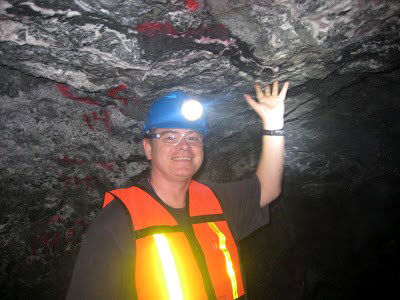Mining Stocks on the Move! So, What Makes a Good Junior Miner, Anyway?
Heads up: We’ll send you the conclusion of this two-part series on Thursday. After that, Sean’s next regular Wealth Wave issue will come your way on Tuesday, Jan. 1.
Yesterday the Dow Industrials fell 507 points. Just about everything got dumped, but not gold miners. In fact, all the miners I recommend in Supercycle Investor closed higher on the day. That’s because, as the market tumbled, gold went higher … and the miners rode that wave. And the miners continued to climb even as the Dow made a triple-digit advance during today’s trading session.
One question I get asked a lot at conferences is “What makes a good junior miner?” And with the latest trading action, you may be wondering the same.
It’s a good question — and the answer can help you make money. Because when precious metals blast off, junior miners will be some of the highest flyers.
But with high profit potential comes heightened risk. So today, we’ll look at how to find junior miners that offer the right balance of both.
Before we dive in, let me just say that the term “junior” is very broad. It covers everything from companies raising money to those exploring in a “green field” (untouched property), as well as producing miners with more than $1 billion in market cap and multiple projects.
So let’s narrow things down by first going over some phases of a project’s life cycle.
Exploration
There’s a great old phrase that goes like this: “A gold mine is a hole in the ground with a liar on top of it.” At this stage, promoters can say just about anything about their exploration projects.
Fortunately, there are good projects run by people who have a track record of finding good projects and building them up so they can be sold off for a huge profit.
Buying in during this phase can yield an enormous return. However, the risk is also huge.
Almost without exception, good explorers are not mine developers. Those who like to explore stick to exploring … and when the project is big enough, they sell it to a developer.
Which leads us to…
Pre-feasibility & Feasibility Phases
During the pre-feasibility phase, explorers determine whether a deposit has reasonably robust economic benefits — at least enough to justify the cost of the next stage of studies.
The feasibility phase defines the extent, location and value of the ore body.
These two phases, coupled with the permitting process, require a lot more money than the initial exploration. Most companies will cover this by issuing stock. The more stock they issue, the more dilution current shareholders feel.
Construction
Building a mine costs a lot of money. At this point, the construction of supporting infrastructure and direct employment are likely the largest expenses.
A less-than-smart company will issue shares like hotcakes, hoping a solid flow of good news will boost both investor interest and share price.
Your investment risk goes down a little after this phase reaches completion. Of course, it can take years to get to this point.
Production
Finally, that hole in the ground is actually putting out something worthwhile. Your junior miner will generate revenues for the first time as its mine comes into production. This is the least risky stage …
But there’s still risk.
In the mining world, anything can happen. Heck, I once saw a gold miner get up and running … only to find out the gold particles in their ore was too fine for their plant. It went in one end, and straight out the other.
The delay to fix that took months!
Now, I’m not saying that will happen to one of the miners you invest in. It is something you should be prepared for, though.
The phases I just covered are common to all junior miners. However, while mines can be similar, no two are exactly the same. A lot depends on ore grade, geology, metallurgy, infrastructure, local politics and more.
Generally speaking, I recommend novice resource investors stay away from “green field” junior explorers. It’s not that there isn’t money to be made there. But the further a project is from production, the more that can go wrong. (Sometimes spectacularly wrong.)
When you’re considering a junior miner, think back to those stages. I have listed them from “most risky” to “least risky.”
As is the case with many investments, higher risk generally goes hand-in-hand with higher reward. If you know your own risk/reward balance, you should be able to narrow down what kind of company is right for you.
That said, in my experience, the junior miners that are EASIER to make money on generally have five traits in common. I’ll talk about those in Thursday’s issue.
All the best,
Sean




